Family : Labridae

Text © Giuseppe Mazza

English translation by Mario Beltramini
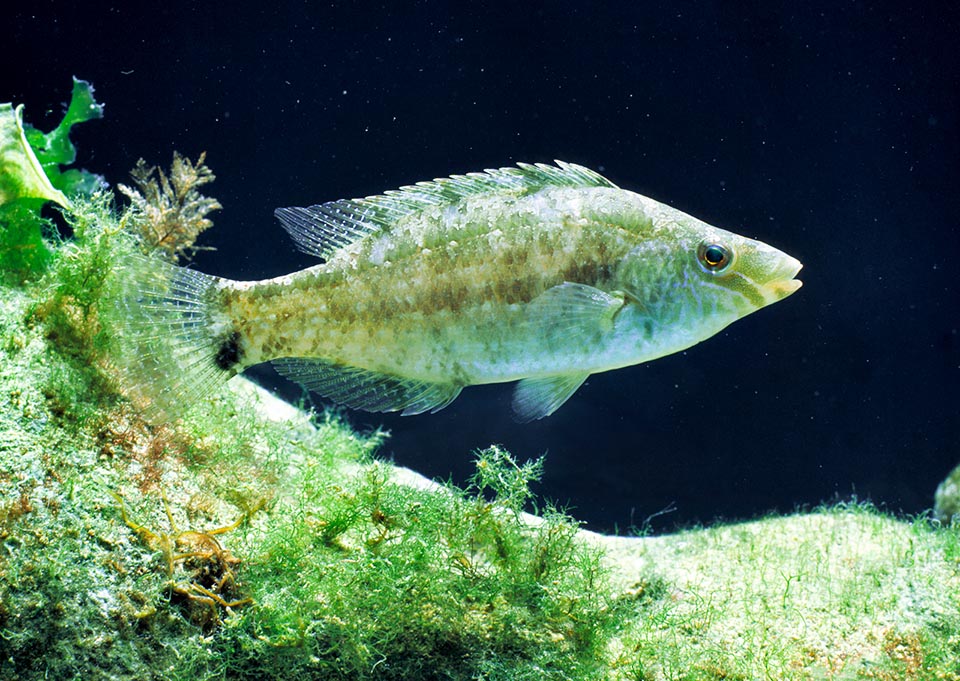
Symphodus cinereus is a small wrasse frequent in the Mediterranean, the Black Sea and along the Atlantic coast from Gibraltar to the Arcachon Basin © Giuseppe Mazza
Known as Grey wrasse, the Symphodus cinereus (Bonnaterre, 1788) belongs to the class of the Actinopterygii, the ray-finned fishes, to the order of the Perciformes and to the family of the Labridae.
The name of the genus Symphodus comes from the Greek “συμφύω” (synfuo), to grow together, and “ὀδούς” (odous), teeth, hence “teeth grown together”, small and almost hidden by the gingival tissue and by the lips.
The name of the species cinereus reminds simply, in Latin, that its colour is, roughly, that of the ash, especially on the back during the reproductive period; anyway a dull colour, funeral, if compared to the other species of Symphodus and more generally to that of the multicoloured world of the Labridae.
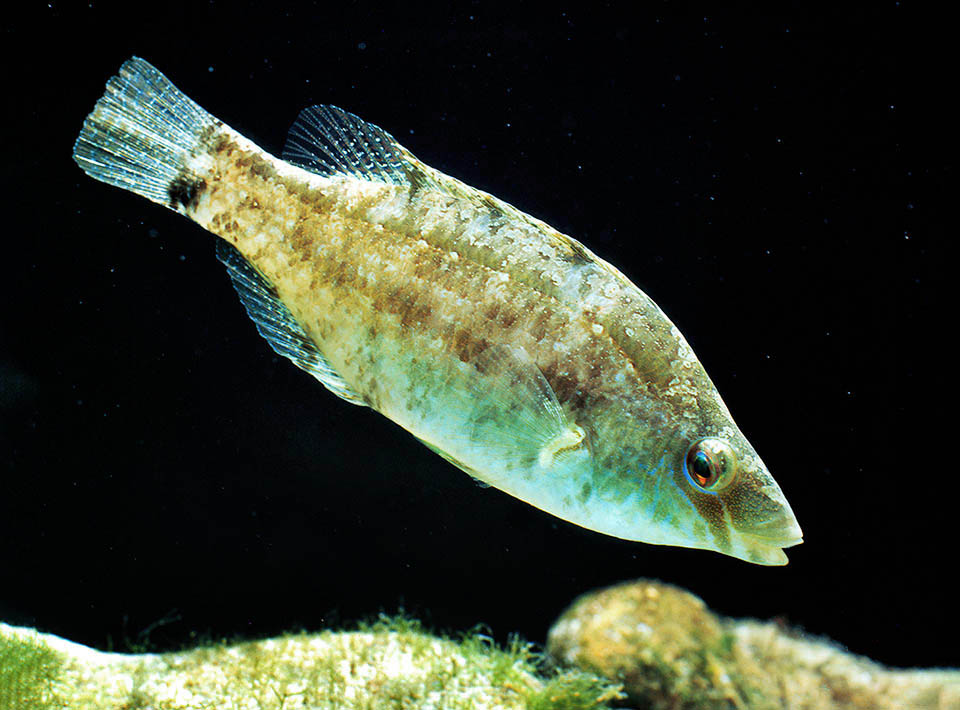
It usually measures 10-15 cm. It has 2 rows of scales under eye and a characteristic black spot can immediately be seen at the base of caudal peduncle © Giuseppe Mazza
Zoogeography
Present along all Mediterranean coasts, including the Black Sea, goes then northwards, after Gibraltar, reaching in the Atlantic the Bassin d’Arcachon.
Ecology-Habitat
It loves the calm waters, the soft bottoms rich in vegetation and debris, the lagoons and the mouth of the big rivers, such as, for instance, the Danube. Frequent in the prairies of Neptune grass (Posidonia oceanica), usually swims at 1-20 m of depth.
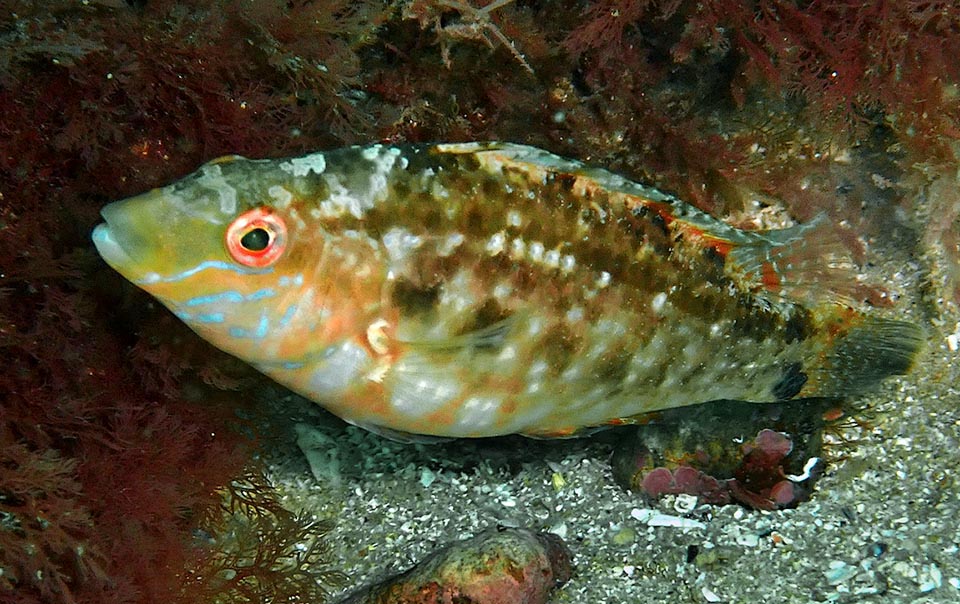
A colored band runs down under the eyes and reaches the throat. The mouth, very small, has thin lips that are not protractile, unlike what usually happens in Labridae © Frédéric André
Morphophysiology
The Grey wrasse is usually 8 cm long, but males reach even the 15 cm, with a record of 18 cm.
In fact, the Symphodus cinereus is a protogynous hermaphrodite, that is with females that while growing transform in males.
These may already reproduce when about one year old, around the 4 cm of length, but only when exceeding the 7 cm can transform in males.
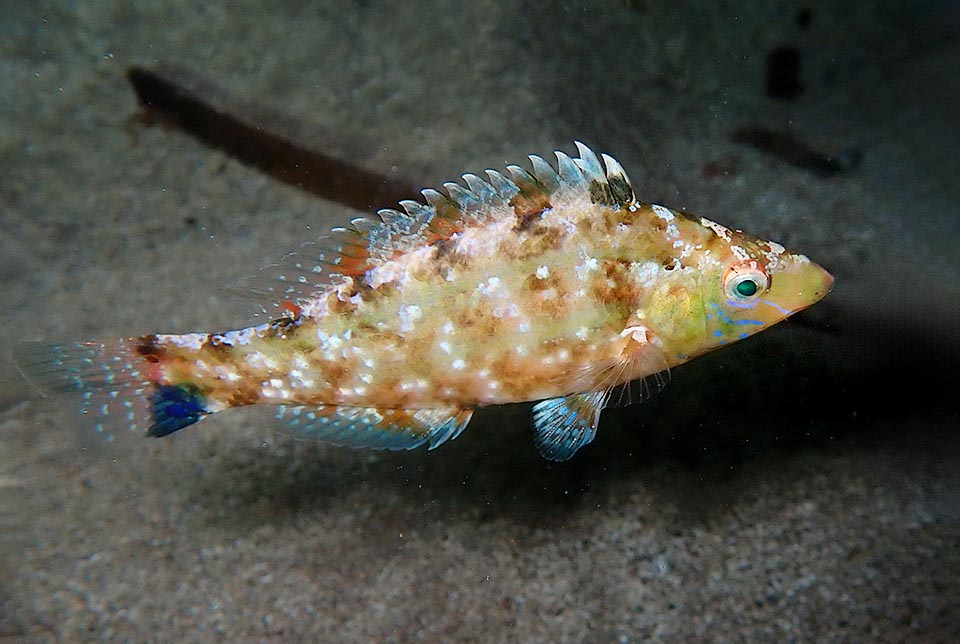
Common in Posidonia meadows but also at the mouth of large rivers in brackish waters, Symphodus cinereus feeds on polychaetes, bryozoans, molluscs and crustaceans © Sylvain Le Bris
The body is oval, laterally compressed, with very small mouth and thin not protractile lips, contrary to what is observed in most of the Labridae.
Under the eye we note 2 rows of scales, and this distinguishes it from the Symphodus ocellatus who has 3 of them, from the Symphodus quinquemaculatus that has 4 and from the Symphodus tinca that, seen its size, has 5 of them.
The dorsal fin has 12-15 spiny rays and 8-11 soft, slightly longer, and the anal, smaller, contents of 3 spiny rays and 7-10 unarmed ones.
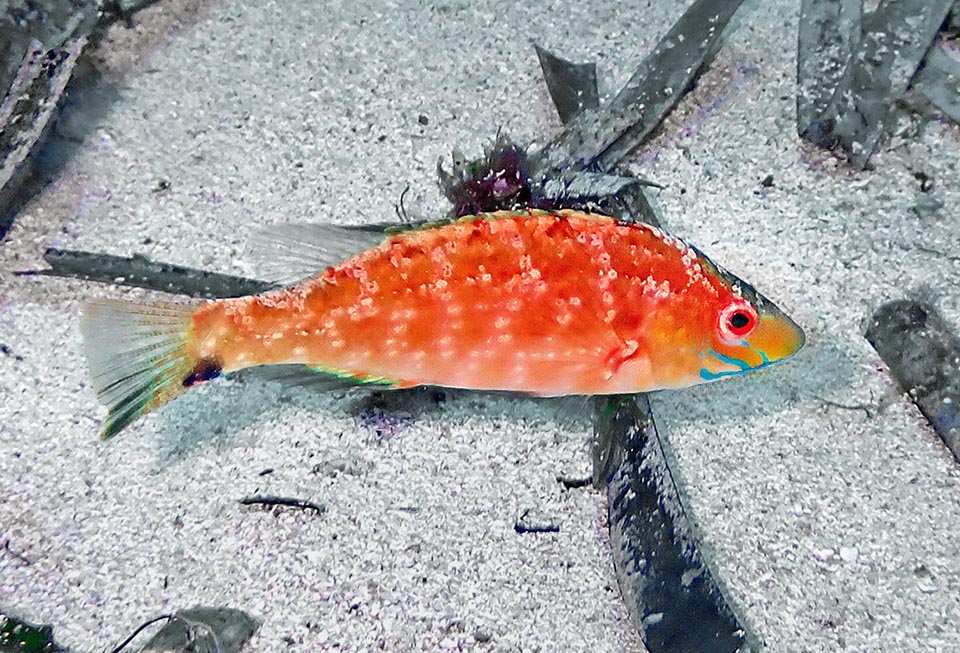
Livery, which varies according to location, season and sex, is often grey-greenish with white spots, but the background colour can be light green or reddish © Sylvain Le Bris
The livery is extremely variable depending on the locality, the season and the sex. Usually it is grey-greenish with white small dots but the background colour can also be pale green or tending to reddish.
Characteristic is the black dot at the base of the caudal peduncle. We can note also a dark stripe starting around the eyes that goes down surrounding the throat. The belly is whitish and the sides have at times two dark longitudinal lines. The nuptial livery of the males foresees yellow-orange belly and throat, cheeks streaked with yellow and light blue and grey brown back.
They talked about a subspecies of brackish waters, the Symphodus cinereus staitii, but nowadays it is considered as a synonym.
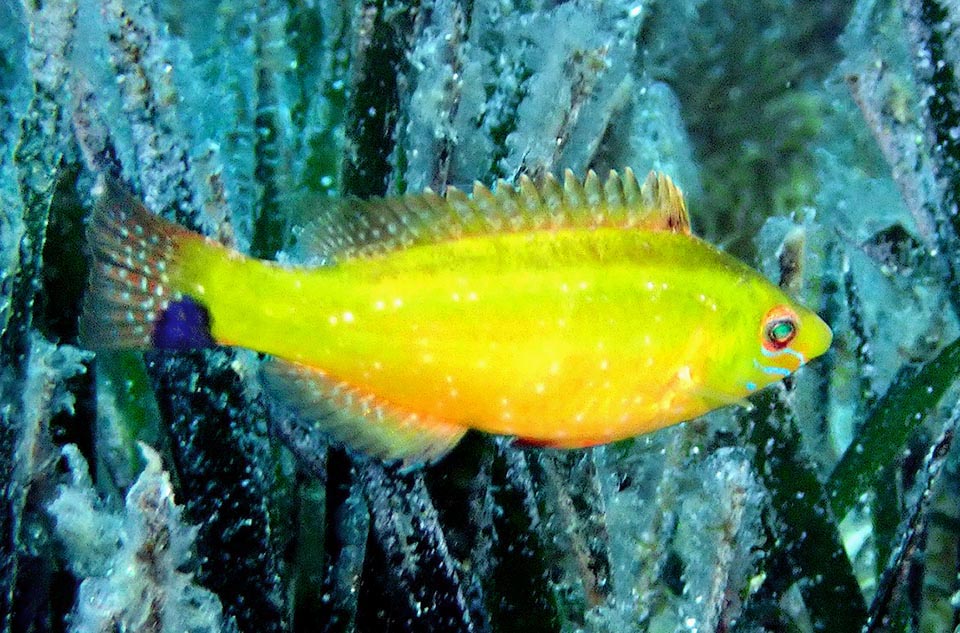
The males often have a golden nuptial livery with a yellow-orange belly and throat, blue-streaked cheeks and a brownish gray back © Sylvain Le Bris
Ethology-Reproductive Biology
The Grey wrasse lives in small groups nourishing of polychaetes, bryozoans, molluscs and crustaceans.
During the reproductive season, the males dig in the sand a cup-shaped nest, decorated with seaweeds and shells, to attract the females and entice them to lay. They defend it energetically from the male intruders, but there are also some young naughty ones, at times disguised with a livery similar to that of the females, that while passing, as a per a chance, over the nest contribute to insemination.
In any case, it is always the dominant male who surveys the eggs till the hatch.
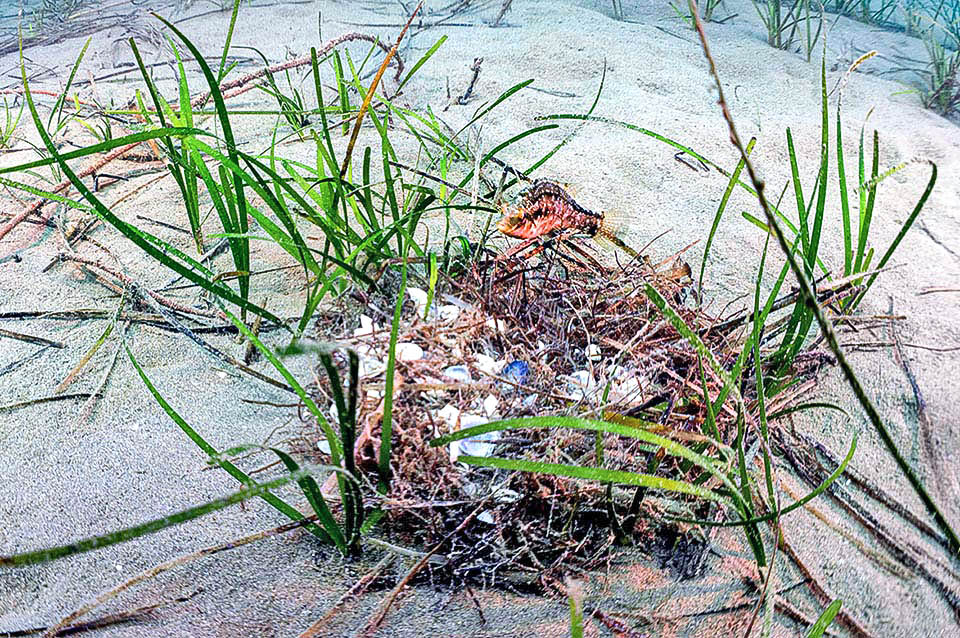
During the breeding season, males attract females with nests decorated with shells and woven seaweed. The eggs are then guarded until they hatch © Bernat Garrigós
The life expectancy of the Symphodus cinereus is of 5-6 years. The resilience of the populations is mediocre, with a possible doubling of the populations in 1.4-4.4 years, and the fishing vulnerability index, relatively low, scores 27 on a scale of 100.
Since 2015 Symphodus cinereus therefore appears as “LC, Least Concern” in the IUCN Red List of endangered species.
Synonyms
Labrus cinereus Bonnaterre, 1788; Crenilabrus cinereus (Bonnaterre, 1788); Symphodus cinereus cinereus (Bonnaterre, 1788); Crenilabrus staitii Nordmann, 1840; Symphodus cinereus staitii (Nordmann, 1840).
→ For general information about FISH please click here.
→ For general information about BONY FISH please click here
→ For general information about CARTILAGINOUS FISH please click here.
→ To appreciate the BIODIVERSITY of BONY FISH please click here.
→ To appreciate the BIODIVERSITY of CARTILAGINOUS FISH please click here.
